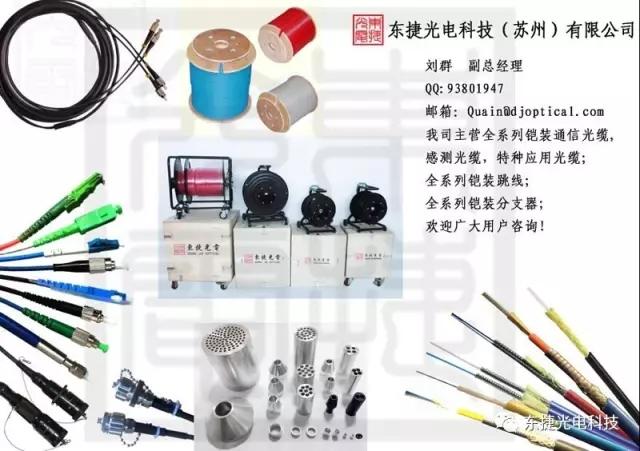发布日期:2017-11-24 查看:0
As a data transmission medium with high bandwidth and high security, optical fiber is widely used in various large and medium networks. Because the cable and expensive equipment, fiber mostly is only used in backbone network, which should be used for vertical cabling system backbone subsystem and campus subsystem, to realize connection between buildings and between floors, is also applied to the higher requirements of the Horizontal Cabling for transmission rate and safety.
Basic knowledge and system design of fiber optic cable routing
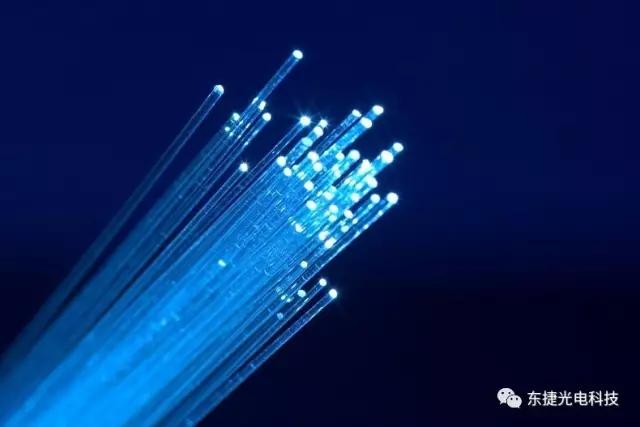
1. Light and its characteristics:
1) light is an electromagnetic wave
The visible light wavelength range is 390~760nm (nm). More than 760nm is infrared light, and less than 390nm is ultraviolet light. Optical fiber applications are: 85013001550, three kinds.
2) refraction, reflection, and total reflection of light.
Because light travels at different speeds in different materials, light will produce refraction and reflection at the interface between two substances when light is transmitted from one substance to another. Moreover, the angle of the refracted light varies with the angle of the incident light. When the angle of the incident light reaches or exceeds an angle, the refracted light will disappear, and the incident light will be reflected back, which is the total reflection of light. Different materials have different refraction angles to the same wavelength light (that is, different materials have different light refractive index), and the same material has different refraction angles to different wavelength light. Optical fiber communication is based on the above principles.
2. Structure and category of optical fiber:
1) optical fiber structure:
Optical fiber bare fiber is generally divided into three layers: central high refractive index glass core (core diameter is generally 50 or 62.5 m), the middle is low refractive index silicon glass cladding (diameter is generally 125 m), the most is the strengthening of the resin coating.
2) numerical aperture:
The incident light at the end of the fiber can not be all transmitted by the optical fiber, but only the incident light in a certain angle range can. This angle is called the numerical aperture of an optical fiber. The numerical aperture of optical fiber is larger, which is beneficial to the butt joint of optical fiber. The numerical aperture of optical fiber produced by different manufacturers is different (AT&T CORNING).
3) types of optical fibers:
The transmission modes of A. according to light can be divided into single touch fiber and multi-mode fiber.
Multimode fiber: the central glass core is coarse (50 or 62.5 m), and it can transmit various modes of light. But the dispersion between the modes is large, which limits the frequency of the transmitted digital signal, and will become more serious with the increase of the distance. For example, when 600MB/KM's fiber is in 2KM, it's only 300MB bandwidth. Therefore, multimode optical fiber transmission distance is relatively close, generally only a few kilometers.
Single-mode fiber: the center glass core is fine (the core diameter is generally 9 or 10 m), and only one mode light can be transmitted. Therefore, the mode dispersion is very small, suitable for remote communication, but its chromatic dispersion plays a major role, so the single-mode fiber has a higher requirement for the spectral width and stability of the light source, that is to say, the spectral width is narrow and the stability is better.
B. is divided into conventional single-mode fiber and dispersion shifted single-mode fiber according to the optimum transmission frequency window.
Conventional: fiber manufacturers optimize the fiber transmission frequency on a single wavelength of light, such as 1300nm.
Dispersion shift type: fiber producer will optimize the optical fiber transmission frequency in two wavelengths of light, such as 1300nm and 1550nm.
According to the distribution of refractive index, C. is divided into mutation and gradual change optical fiber.
Mutant: the refractive index of the fiber core to the glass cladding is abrupt. It has low cost and high inter mode dispersion. It is suitable for short distance and low speed communication, such as industrial control. However, single-mode fibers are abrupt because of the small dispersion between modes.
Graded fiber: Fiber Optic Refractive center core to the glass cladding rate is gradually reduced, the high Moguang spread according to the sine form, which can reduce the inter modal dispersion, improve the fiber bandwidth, the transmission distance increases, but the cost is higher, now for the graded fiber multimode fiber.
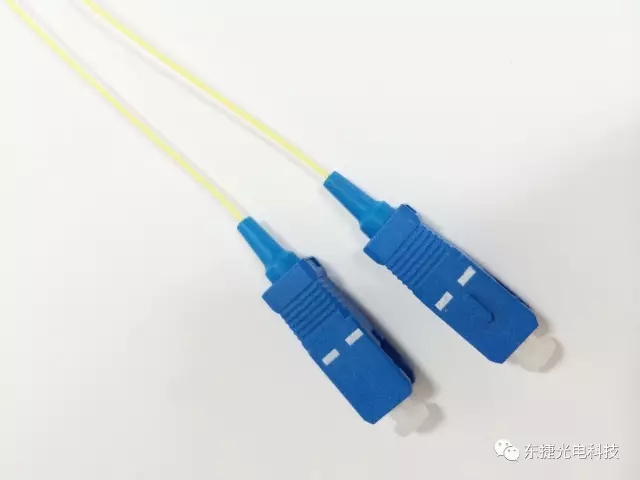
4) commonly used optical fiber specifications:
Single mode: 8/125, m, 9/125, m, 10/125, M
Multimode: 50/125, m, European standard 62.5/125, m, American Standard
Industrial, medical and low speed networks: 100/140, m, 200/230, M
Plastic: 98/1000 m, used in automobile control
3. Manufacture and attenuation of optical fiber:
1) optical fiber manufacturing:
The main methods of optical fiber manufacturing are: in tube CVD (chemical vapor deposition) method, in rod CVD method, PCVD (plasma chemical vapor deposition) method and VAD (axial vapor deposition) method.
2) attenuation of optical fibers:
The main factors causing optical fiber attenuation are intrinsic, bending, extrusion, impurity, uneven and butt joint.
Intrinsic: the inherent loss of optical fibers, including Rayleigh scattering, intrinsic absorption, etc..
Bend: when the fiber bends, the light in some of the fiber will be lost because of scattering, resulting in loss.
Extrusion: loss caused by tiny bending of an optical fiber under compression.
Impurity: loss caused by absorption and scattering of light from an optical fiber in an optical fiber.
Nonuniformity: loss of refractive index inhomogeneity due to optical fiber materials.
Butt joint: the loss of optical fiber butt joint, such as: different axis (single-mode fiber coaxial requirements less than 0.8 m), the end and the axis is not vertical, the end is uneven, butt core diameter mismatch and poor welding quality.
4. Advantages of optical fiber:
1) through the wide band optical fiber. The theory of up to 30 trillion hertz.
2) no trunk length. Tens to more than 100 kilometers, copper wire only a few hundred meters.
3) not affected by electromagnetic field and electromagnetic radiation.
4) light weight and small size. For example, 900 pairs of twisted pair wires with 21 thousand channels are 3 inches in diameter and 8 tons in weight, /KM. And ten times the amount of fiber optic cable, the diameter of 0.5 inches, weight 450P/KM.
5) optical fiber communication is not charged, safe to use, can be used for flammable, easy to storm place.
6) use a wide range of ambient temperature.
7) chemical corrosion, long service life.
Two, fiber optic cable
1. Manufacture of optical fiber cable:
The manufacturing process of fiber optic cable is generally divided into the following processes:
1) screening of fiber: fiber with excellent transmission characteristics and high tensile strength.
2) fiber dyeing: the use of standard full chromatography to identify, requiring high temperature does not fade, not migration.
3) two extrusion: use high elastic modulus, low linear expansion coefficient of plastic extrusion into a certain size of the tube, the fiber into and filled with moisture and waterproof gel, and finally stored for a few days (not less than two days).
4) optical fiber stranding: a number of extruded fibers and reinforcement unit are twisted together.
5) the outer sheath of the fiber optic cable: a layer of sheath on the twisted optical cable.
2. Kinds of optical cable:
1) according to the laying methods are: self bearing aerial optical cable, pipeline optical cable, armored buried fiber optic cable and submarine fiber optic cable.
2) according to the optical cable structure are: bundle tube fiber optic cable, layer twisted fiber optic cable, hugging fiber optic cable, ribbon fiber optic cable, non metallic fiber optic cable and branch optical cable.
3) according to the use of: long distance communication optical cable, short distance outdoor optical fiber cable, hybrid optical cable and building internal fiber optic cable.
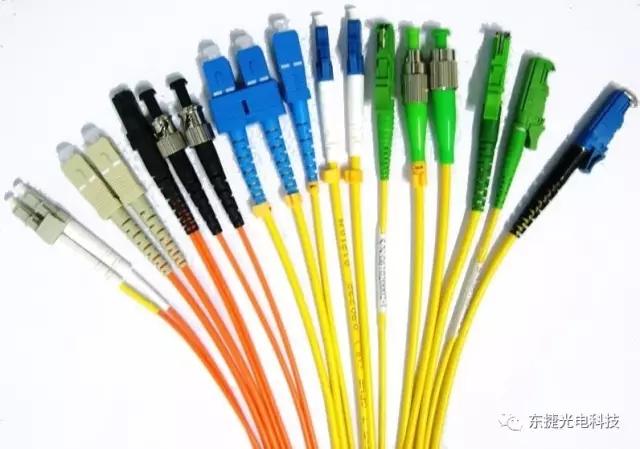
3. Construction of optical cable:
Over the years, the construction of optical fiber cable has made us have a set of mature methods and experience.
Outdoor construction of optical cable:
The most important choice of long distance fiber optic cable is to choose an appropriate path. Here is not necessarily the shortest path is the best, but also pay attention to the right to use the land, the possibility of erection or buried.
Must have a complete design and construction drawings, so that the construction and future inspection convenient and reliable. The construction must always be careful not to cable or by the weight of the hard object pricks.
The turning radius of fiber optic cable is 20 times larger than the diameter of optical cable itself.
1) outdoor aerial optical cable construction:
A. hanging hanging overhead, this way is simple and cheap, the most widely used in China, but the hook hanging, finishing more time-consuming.
B. wire winding overhead, this approach is more stable, less maintenance work. But it needs a special tie machine.
The C. self bearing overhead way requires high line dry, difficult construction and maintenance, high cost, and is rarely used in china.
When the D. is overhead, the guiding device of optical cable should be added to the dry place, and the fiber optic cable should be avoided. Attention should be paid to reducing friction during optical cable traction. Each stem to remaining for a retractable cable.
E. should pay attention to the reliable grounding of metal objects in optical cable. Especially in mountainous areas, high voltage power grid areas and many regions, there are generally 3 grounding points per kilometer, and even non-metallic fiber optic cable.
2) outdoor pipeline optical cable construction:
A. should check the occupancy of the pipeline before construction, cleaning and placing the plastic pipe, and put into the traction line at the same time.
B. calculate the length of cloth release, there must be enough reserved length.
A C. deployment length should not be too long (usually 2KM), wiring should start in the middle to both sides of the traction.
D. cable traction force is generally not greater than 120kg, and should be strengthened the heart of fiber optic cable, and make the fiber head waterproof strengthening treatment.
E. fiber cable introduction and extraction must be accompanied by the device, not directly mopping the floor.
F. pipeline optical cable should also pay attention to reliable grounding.
3) laying of direct buried optical cable:
The depth of A. buried optical cable trench should be excavated according to the standard, and the standard should be listed below:
B. can not dig trenches can be overhead or drilling buried pipeline laying.
C. trench bottom should be firm and firm, and partially filled with sand, cement or support when necessary.
D. can be drawn manually or mechanically, but should be guided and lubricated.
When the E. is finished, the soil should be covered and rammed as soon as possible.
4) laying of optical cables in buildings:
A. vertical laying, should pay special attention to the problem of fiber optic cable bearing, generally every two layers to fix the optical cable once.
When B. cables pass through walls or floors, plastic pipes with protective covers are required and filled with flame retardant fillers.
C. can also advance a certain amount of plastic pipe laying in the building, until after the application of cable and shoot or vacuum Fabregas traction cable.
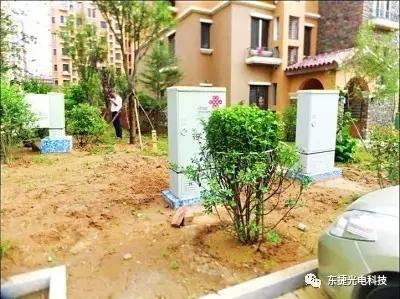
4. Selection of optical cable:
In addition to the number of fiber core and fiber type, the selection of optical fiber cable should select the outer sheath of optical cable according to the use environment of optical cable.
1) when outdoor optical cable is buried directly, armored fiber optic cable should be selected. When the aerial is overhead, the black plastic sheath with two or more reinforcing ribs can be selected.
2) the fiber optic cable used in the building should pay attention to its characteristics of flame retardance, poison and smoke. Generally, the flame retardant but smoke type (Plenum) can be used in the pipe or forced ventilation, and the flame retardant, non-toxic and smokeless type (Riser) should be chosen in the exposed environment.
3) when building vertical cable laying, DistributionCables can be selected; BreakoutCables can be used in horizontal wiring.
4) if the transmission distance is within 2km, multimode fiber optic cable can be selected, and more than 2km can be used as relay or single mode optical fiber cable.
Basic knowledge and system design of fiber optic cable routing 2
Three, connection and detection
1. Fiber optic cable connection:
The main methods include permanent connection, emergency connection and active connection.
1) permanent optical fiber connection (also called hot melt):
This connection is the connection point will be totally fiber melted and connected together by discharge method. It is generally used for long distance connections, permanent or semi permanent connections. The main characteristic is that the attenuation of connection is the lowest among all connection methods, and the typical value is 0.01~0.03dB/. But the connection requires special equipment (welding machine) and professional personnel to operate, and the connection point also need special container protection.
2) emergency connection (called cold melting):
The emergency connection is mainly mechanical and chemical methods, the two optical fiber fixed and bonding together. The main feature of this method is that the connection is fast and reliable, and the typical attenuation is 0.1~0.3dB/ point. But the connection point of long-term use will be unstable and decay will be greatly increased, so only a short time should urgently.
3) active connection:
Active connection is a method to connect a site with a site or site to an optical cable using a variety of fiber optic connections (plugs and sockets). This method is flexible, simple, convenient and reliable, and is widely used in computer network cabling in buildings. Its typical attenuation is 1dB/ joint.
2, optical fiber detection:
The main purpose of optical fiber inspection is to ensure the quality of the system connection, reduce the failure factors and find the fault point of the optical fiber when the fault occurs. There are many detection methods, which are mainly divided into manual simple measurement and precise instrument measurement.
1) simple manual measurement:
This method is generally used to quickly detect the breaking and construction of optical fiber, and to distinguish the optical fiber. It uses a simple light source to enter visible light from one end of the fiber, which is observed from the other end. Although this method is simple, it can not measure the attenuation of the fiber and the breakpoint of the optical fiber quantitatively.
2) precision instrument measurement:
Using optical power meter or optical time domain reflectometry (OTDR) to measure the optical fiber quantitatively, the attenuation of the optical fiber and the attenuation of the joint can be measured, and the breakpoint position of the optical fiber can be even measured. This measurement can be used to quantitatively analyze the causes of optical fiber network failure and evaluate the optical fiber network products.
Four. Application and system design of optical fiber
1. Application of optical fiber:
The human society has now developed into an information society, and the amount of communication of sound, images and data is very large. The former means of communication can not meet the current requirements, and optical fiber communication has been widely used because of its advantages of large information capacity, good confidentiality, light weight, small volume and long distance without relay. Its applications are in communications, transportation, industry, medical, education, aerospace and computer industries, and are developing to a wider and deeper level. The application of light and optical fiber is bringing profound influence and change to human life.
2. Design of optical fiber network system:
The design of optical fiber systems generally follows the following steps:
1) first of all, what kind of network should be designed, what is the status quo, and why optical fiber is used?.
2) according to the actual situation, choose suitable fiber network equipment, optical cable, jumper and other things used for connection. Selection should be based on availability, and then determined according to performance, price, service, place of origin and brand.
3) according to customer requirements and network type to determine route routing, and draw wiring diagram.
4) when the route is long, it is necessary to calculate the attenuation margin of the system, and the calculation can be carried out according to the following formula:
Attenuation margin = transmit light power - Acceptance sensitivity line attenuation connection attenuation (dB), in which line attenuation = optical cable length * unit attenuation;
The unit attenuation is closely related to the quality of the fiber, the general single-mode is 0.4~0.5dB/km, and the multimode is 2~4dB/km.
The connection attenuation includes weld attenuation, joint attenuation, welding attenuation and the means of welding and the quality of personnel, generally melting point is 0.01~0.3dB/, cold melting 0.1~0.3dB/ point; joint attenuation is closely related to the quality of the joint, generally 1dB/ point. The system attenuation margin is generally no less than 4dB.
5) when the accounting is not qualified, the design shall be revised according to the circumstances, and then be checked again. This can sometimes happen several times.
3. Design examples:
Transformation of a campus network:
According to the situation, the existing thinnet side using a three repeater (twisted pair fiber - thinnet), the other side using a twisted pair HUB with optical fiber backbone. The 4 core outdoor multimode fiber optic cable with intermediate or overhead beam type can be welded into an indoor jumper with ST head (because the fiber interface of the equipment is ST type).
Attenuation calculation: (general multi-mode equipment does not need to be checked in the range of 2km, only here is an example)
Transmit power: -16dBm
Receiver sensitivity: -29.5dBm
Line attenuation: 1.5km * 3.5D
